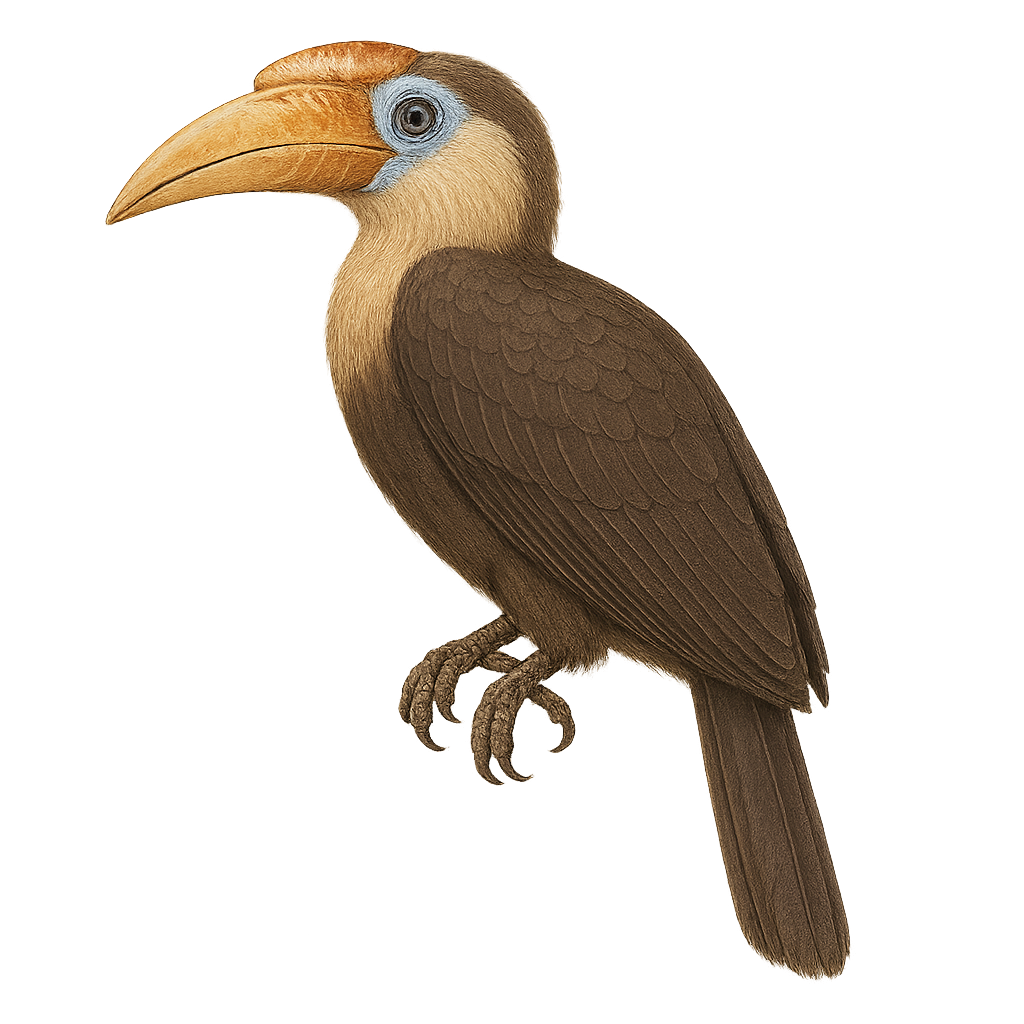Your wildlife photography guide.
Explore the austen's brown hornbill in detail, study its behavior, prepare your shots.
Where to observe and photograph the austen's brown hornbill in the wild
Learn where and when to spot the austen's brown hornbill in the wild, how to identify the species based on distinctive features, and what natural environments it inhabits. The WildlifePhotographer app offers tailored photography tips that reflect the austen's brown hornbill’s behavior, helping you capture better wildlife images. Explore the full species profile for key information including description, habitat, active periods, and approach techniques.
Austen's Brown Hornbill
Scientific name: Anorrhinus austeni

IUCN Status: Near Threatened
Family: BUCEROTIDAE
Group: Birds
Sensitivity to human approach: Suspicious
Minimum approach distance: 10 m
Courtship display: March to April
Incubation: 25-27 jours
Hatchings: March to May
Habitat:
tropical rainforests, lowland forests, montane forests
Activity period :
Primarily active during the day, with peak activity in the morning and late afternoon.
Identification and description:
The Austen's Brown Hornbill, Anorrhinus austeni, is a captivating bird belonging to the Bucerotidae family. This medium-sized hornbill is notable for its brown plumage and distinctive white tail band. Males and females exhibit sexual dimorphism, with males having larger, more curved bills. These birds primarily inhabit the tropical rainforests of Southeast Asia, feeding on fruits, insects, and small vertebrates. Known for their social behavior, they often live in family groups. Nesting occurs in tree cavities, where the female is sealed in during incubation. Although their population is stable, deforestation poses a threat to their natural habitat.
Recommended lens:
400mm – adjust based on distance, desired framing (portrait or habitat), and approach conditions.
Photography tips:
To photograph the Austen's Brown Hornbill, it is advisable to use a 400mm lens or longer to capture detailed images without disturbing the bird. Look for areas where these birds are active, such as forest edges or near food sources. Be patient and discreet, as these birds can be suspicious. Use a tripod to stabilize your camera and wait for the right moment to capture their social behavior or in-flight action. The natural light of morning or afternoon can provide optimal lighting to highlight their distinctive plumage.
The WildlifePhotographer App is coming soon!
Be the first to explore the best nature spots, track rutting seasons, log your observations, and observe more wildlife.
Already 1 432 wildlife lovers subscribed worldwide

